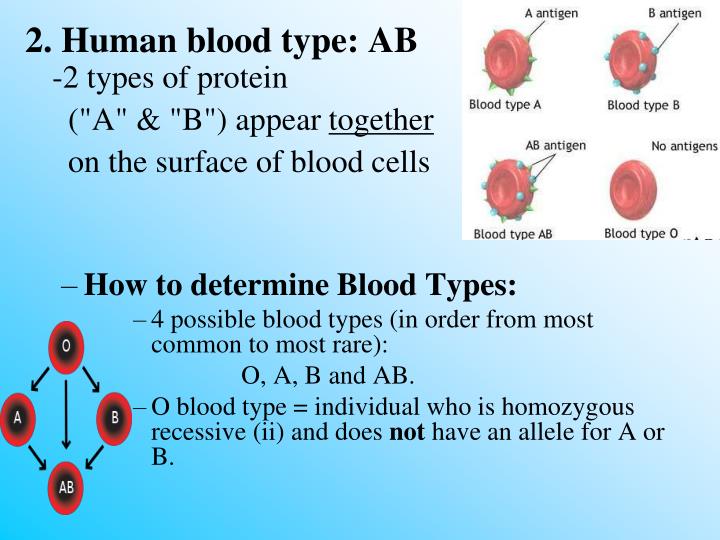
In this case, she expresses the A blood antigen, but she also has a gene for the O blood type. Another way this can happen is if the parents are heterozygous for the O allele: this means the mother may be blood type A, but her genotype (the genes she carries) are really AO. If both parents are blood type O, all of the children in the family will have the O blood type. Those with types AO or BO will be type A or B, respectively.īy Kalaiarasy (Own work), via Wikimed Blood Type Geneticsīlood types A and B are co-dominant, so if the father has blood type AA and the mother has blood type BB, the child will have a blood type of AB.īlood Type O is recessive, so a child will only have this blood type if he or she gets two O blood type genes from his or her parents. Inheritance patterns of the ABO blood groups - A and B are codominant, so those who inherit type A and type B alleles will have type AB blood.

Two other patients, however, died after milk was transfused into their veins. This belief was erroneous, of course, but they had success with one sick man who responded favorably to the transfusions. Bovell and Edwin Hodder started intravenous transfusions of milk in the belief that the fat molecules in milk could be transformed into white blood cells, and that white blood cells were an immature version of red blood cells. The transfusion of cow’s milk was attempted in 1854 in Canada, during a cholera epidemic. Some scientists attempted to prevent the adverse reactions to blood transfusions by transfusing blood substitutes. Other people, however, simply went into shock and died after blood transfusions.


Sometimes they were successful: in 1818 James Blundell managed to accomplish the first successful human blood transfusion, and saved a woman hemorrhaging from childbirth. As there was no understanding of blood groups, blood transfusions were extremely risky. Unfortunately, the move to human transfusion was quite tricky.


 0 kommentar(er)
0 kommentar(er)
